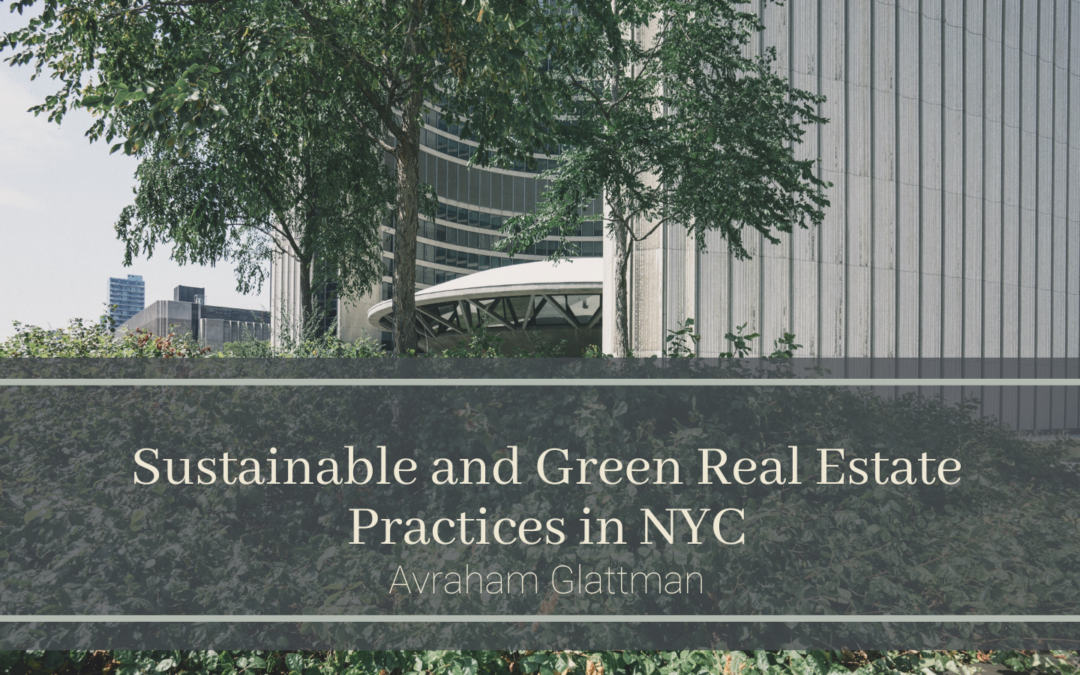New York City, the concrete jungle, is also becoming a shining example of sustainable and green real estate practices. As urbanization continues to surge worldwide, cities like NYC face the challenge of accommodating a growing population while minimizing their environmental footprint. In response, real estate developers, architects, and city planners are adopting innovative strategies to make the Big Apple a greener, more sustainable place to live and work.
Energy Efficiency
One of the primary goals of green real estate practices is to reduce energy consumption. In NYC, developers are retrofitting older buildings with energy-efficient technology, such as LED lighting, efficient heating and cooling systems, and smart thermostats. New constructions often incorporate energy-saving features, including solar panels, green roofs, and advanced insulation materials. These initiatives decrease energy bills and lower greenhouse gas emissions, contributing to the city’s commitment to combat climate change.
Sustainable Materials
The choice of construction materials plays a significant role in reducing the environmental impact of real estate projects. Sustainable materials like reclaimed wood, recycled steel, and low-VOC paints are becoming more common in NYC’s real estate developments. Developers increasingly opt for durable, eco-friendly, locally sourced materials to minimize transportation emissions.
Green Spaces and Rooftop Gardens
Green spaces are a precious commodity in a city as densely populated as NYC. Many real estate projects now incorporate rooftop gardens and green spaces to counteract the concrete sprawl. These areas provide residents with a tranquil escape while reducing the urban heat island effect and improving air quality. Some developments use these green spaces for urban farming, contributing to local food production.
Transit-Oriented Development
Encouraging residents to use public transportation and reduce car dependency is critical to green real estate practices. NYC’s Transit-Oriented Development (TOD) initiatives promote the construction of residential buildings near transit hubs and public transportation options. This reduces traffic congestion and minimizes air pollution and energy consumption associated with commuting.
High-Performance Building Standards
NYC has implemented stringent building codes and high-performance building standards to ensure new developments are as eco-friendly. Initiatives like the LEED (Leadership in Energy and Environmental Design) certification encourage developers to incorporate energy-efficient lighting, water-saving fixtures, and advanced HVAC systems.
Adaptive Reuse
Rather than demolishing older buildings, developers in NYC are increasingly embracing adaptive reuse projects. This involves repurposing existing structures for new uses, which can save resources and preserve the city’s architectural heritage. Adaptive reuse reduces waste, adds character to neighborhoods, and reduces construction’s carbon footprint.
Resilience and Climate Adaptation
NYC is acutely aware of the challenges created by climate change: rising sea levels and extreme weather. Real estate developers are incorporating resilience and climate adaptation measures to address these concerns. These can include flood-resistant designs, elevated buildings, and advanced stormwater management systems to protect the structures and their occupants.
Community Engagement
Sustainable real estate practices are not just about the physical aspects of development; they also involve community engagement. Developers increasingly seek input from local communities to ensure that new projects align with their needs and values. These collaborations foster a sense of ownership and help create developments that are not just green but also socially sustainable.
In the heart of the bustling metropolis, sustainable and green real estate practices thrive in NYC. From energy-efficient technologies to adaptive reuse projects and climate resilience measures, the city is taking bold steps to reduce its environmental impact and create a more sustainable urban landscape. These initiatives benefit the environment and enhance the quality of life for NYC’s residents. As other cities worldwide face similar challenges, they can look to the Big Apple as a model for sustainable and green real estate practices that pave the way toward a greener, more sustainable future.
